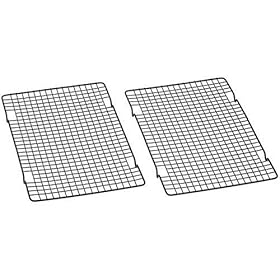I had, or rather almost had, another encounter with my family recently. The holidays made my wife and me curious about whether my maternal grandmother Nana, whose birthday this year would fall on Thanksgiving as it sometimes has, was still alive. If she had been (it turns out she isn't) it would have been her 96th birthday.
Previously on this blog I wrote about the falling-out with my mother that caused me to be disowned by my family; in fact,
some of that story played out on the blog. I don't pretend to understand it; everything that happened still makes me think there's reasons I never found out, and may never find out. The claimed reason, that in choosing to move away from Long Island I was proclaiming myself "too good for the family", is simply implausible. But not all mysteries in life will ever be solved, and the real reasons I was routed from the family are one that probably will remain unknown.
I'm better at accepting mysteries without resolution than my wife is. And the idea that my mother's antipathy for me would be so great she wouldn't even tell me about my grandmother's death (when, so far as I know, my relationship with my grandmother was never touched by whatever it is that poisoned the one between me and my mother) was also beyond the pale. So with Thanksgiving in the air, my wife set out to find out the truth, by digging around looking for members of my family to contact.

Everyone she found was on my father's side, which is probably fortunate. Back when I still lived on Long Island, I was never close to that side, since my parents had had a falling out with them when I was quite young. In the labyrinthine twists of the tale of my family, to which I have been more audience than participant, somehow my status with my father's side has remained cool but cordial, while whatever has happened with my mother has changed relations to her side (including my sister) to positively glacial. (Even though now relations between my mother and my paternal grandmother, and through her the rest of that side of my family, seem to be warmer than they were while I was growing up. Go figure. Family relationships are clearly not
transitive.)
Through these relations, my wife learned that Nana had indeed passed away a few years ago. We still don't know the details, and perhaps never will. No obituary was filed, precisely because my mother didn't want anyone to know unless she personally told them. The rest of us "don't deserve" to know. (There's no surprise in the fact that her attitude towards me, about me not being "good enough" to be informed of my grandmother's death, mirrors what she imagines my attitude to her, thinking that she and everyone isn't "good enough" for me, to be. The accusations one makes against others are often the most telling sign of what's going on in the
accuser's mind.)
Swept up by this, my wife was putting out feelers for chances to reconnect with my family, and things were moving very quickly. I found myself suddenly having to think through the consequences and, as a result of them, put a stop to it. For which I feel bad; she needs that contact with family, after losing some of hers, and I have to deny it. The process of stopping it was also abrupt and left bad feelings in the air. But I concluded it was better to stop it, nevertheless.
Why? Because there was no way any contact, even contact limited to my father's side of the family, could proceed without provoking a reaction that would involve me. It was a wonder I wasn't already put onto the phone to join into a conversation I didn't feel comfortable with or ready for, in the few exchanges that got us that far. And my past experiences with my family make it painfully (I mean that word in its most literal sense) clear that no such interactions can fail to lead to something unpleasant and better avoided.
So in the end, my mother may have cast me out, and perhaps she was just wondering as she did how hard I would fight -- or if I would fight at all -- to get back in. And when I didn't, she concludes that she was right: I left because I wanted nothing to do with my family because I was too good for them. And so she can rest comfortably on her certainty. Which makes her happy, so all is well.
But it's really not in the slightest about being "too good" for them. I can't even figure out a way to apply that phrase. It's like saying that one avoids the number 17 because it's too mauve. How can you be "too good" for family? It's not like what one wants out of family is something that comes in "good" and "not good" flavors. Does she imagine that I sit around like a kid in a child's novel hoping it'll turn out that I was really adopted?
About the only sense in which I make the whole "too good" thing work is to assume she thinks I'm ashamed of my family. I think that I'd word that differently though; in a family where one person was ashamed of the rest, it's not that that person feels "too good for the family", in the sense of him thinking highly of himself; it's more apt to say that he might think poorly of the family. This may seem like a semantic quibble, but it seems like a world of difference between saying "You have behaved badly" and saying "I am a paragon and superior".
And that distinction is patently relevant because, in the act of casting me out of the family and the reasons given for it, my mother has made her accusation slightly true. I do, indeed, now consider my family something to be ashamed of. No, even that's not right. It's more that I'm not proud of what my family has turned out to be. It's not a shame, I am not trying to hide it. It's just the failure to be a source of pride.
But there's nothing in that, not one thing, that doesn't come
after the accusation and casting out. It is precisely because of this action, and how it was done, and the reasons given, and the way the family fell into line doing it, that I
no longer want to have anything to do with them. Self-fulfilling prophecies are not nearly as cool as I thought when I was a kid; they're a dime a dozen. So my mother was so sure I wanted nothing to do with the family that she kicked me out; if she'd been right, wouldn't she have been giving me just what I wanted? And because of how she did that, now, after the fact, she's become right: I no longer want anything to do with the person who would do that, who did that.
But as that lack of desire arose in the fire of that act, it would melt away if that act went to ash. If she somehow came to the conclusion that she was wrong, or that she behaved badly, or better yet, both, and if this were sincere and true, then my reasons for no longer wanting to have anything to do with her would vanish right alongside her belief in that want. I guess my antipathy for her is like Tinker Bell: it exists only so long as she sincerely believes it exists, and behaves accordingly.
Barring that change of heart on her part, there is no way that any contact, however handled, could possibly be anything for me but heartache and an unwelcome intrusion into my life. Don't get me wrong: it's not that the wounds are too painful and any contact would agonize me. Those wounds are long since scars that would not be easily re-opened. Accepting my lot in life is something I am good at. But even if her claws wouldn't re-open wounds instantly, they would do me no good. At best they would waste my time and energy; at worst, they would hurt too. But nothing could come from it that is not something I'd best avoid.
So as much as I feel bad about denying my wife a proxy family experience, in a way I'm also sparing her going through what will almost-inevitably result: the experience turning sour, more for me than for her but for her too. That's just the way this particular cookie crumbles.
 I also got a pair of games for the PS3. One is a game I've played (and enjoyed) the demo from, and wrote about it before: Stuntman: Ignition. I haven't installed the full version yet or done anything with it. Mostly for lack of time (and what time there was, the PS3 has been busy.... Siobhan got LittleBIGPlanet.) When I do, I've also got a driving controller with foot pedals to try (didn't get that as a gift, bought it myself a week or so before Christmas when it was on a deep discount at MidnightBox.)
I also got a pair of games for the PS3. One is a game I've played (and enjoyed) the demo from, and wrote about it before: Stuntman: Ignition. I haven't installed the full version yet or done anything with it. Mostly for lack of time (and what time there was, the PS3 has been busy.... Siobhan got LittleBIGPlanet.) When I do, I've also got a driving controller with foot pedals to try (didn't get that as a gift, bought it myself a week or so before Christmas when it was on a deep discount at MidnightBox.)



































 RealTime and RTC
RealTime and RTC Prism
Prism Uncreated
Uncreated Bloodweavers
Bloodweavers Foulspawner's Legacy
Foulspawner's Legacy Lusternia
Lusternia